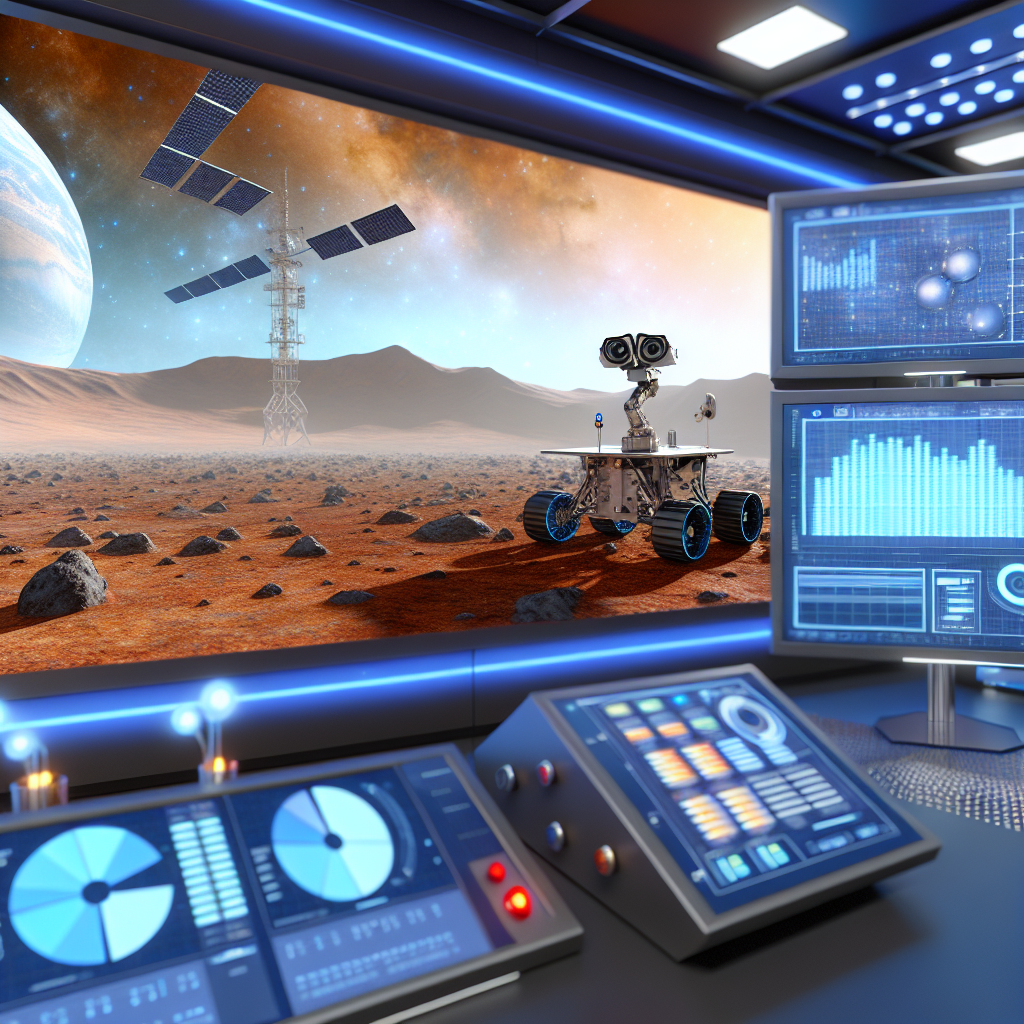-
- AI Applications in Space Exploration
- Understanding AI in Space Exploration
- Key Applications of AI in Space Exploration
- 1. Autonomous Navigation
- Configuration Steps for Autonomous Navigation
- 2. Data Analysis and Interpretation
- Practical Example: Mars Rover Missions
- Code Snippet for Data Analysis
- 3. Predictive Maintenance
- Best Practices for Predictive Maintenance
- Case Studies and Statistics
- Challenges and Considerations
- Conclusion
AI Applications in Space Exploration

As humanity ventures further into the cosmos, the integration of artificial intelligence (AI) into space exploration has become increasingly vital. AI technologies enhance our ability to analyze vast amounts of data, automate complex processes, and make real-time decisions in environments that are often hostile and unpredictable. This guide explores the various applications of AI in space exploration, providing actionable insights, practical examples, and best practices for leveraging these technologies effectively.
Understanding AI in Space Exploration
AI encompasses a range of technologies, including machine learning, natural language processing, and robotics. In the context of space exploration, AI can assist in tasks such as data analysis, autonomous navigation, and mission planning. The relevance of AI in this field is underscored by the increasing complexity of space missions and the need for efficient resource management.
Key Applications of AI in Space Exploration
1. Autonomous Navigation
AI algorithms enable spacecraft to navigate autonomously, reducing the need for constant human oversight. This is particularly important for missions to distant planets or asteroids where communication delays can hinder real-time decision-making.
Configuration Steps for Autonomous Navigation
- Define the mission parameters, including destination and objectives.
- Implement AI algorithms for pathfinding, such as A* or Dijkstra’s algorithm.
- Integrate sensor data (e.g., LIDAR, cameras) to create a real-time map of the environment.
- Test the navigation system in simulated environments to ensure reliability.
- Deploy the system on the spacecraft and monitor performance during the mission.
2. Data Analysis and Interpretation
Space missions generate enormous amounts of data. AI can process and analyze this data more efficiently than traditional methods, identifying patterns and anomalies that may be missed by human analysts.
Practical Example: Mars Rover Missions
The Mars rovers, such as Curiosity and Perseverance, utilize AI to analyze soil samples and identify potential signs of past life. Machine learning models are trained on existing geological data to enhance the rover’s decision-making capabilities.
Code Snippet for Data Analysis
import pandas as pd
from sklearn.ensemble import RandomForestClassifier
# Load dataset
data = pd.read_csv('mars_soil_samples.csv')
# Prepare features and labels
X = data.drop('label', axis=1)
y = data['label']
# Train model
model = RandomForestClassifier()
model.fit(X, y)
# Predict new samples
predictions = model.predict(new_samples)
3. Predictive Maintenance
AI can predict equipment failures before they occur, allowing for timely maintenance and reducing downtime. This is crucial for spacecraft, where repairs can be challenging and costly.
Best Practices for Predictive Maintenance
- Utilize historical data to train predictive models.
- Implement real-time monitoring systems to collect data on equipment performance.
- Regularly update models with new data to improve accuracy.
- Establish a feedback loop to refine maintenance schedules based on model predictions.
Case Studies and Statistics
NASA’s Jet Propulsion Laboratory (JPL) has successfully implemented AI in various missions, including the Mars 2020 mission. The Perseverance rover uses AI to autonomously select rock samples for analysis, significantly increasing the efficiency of its operations. According to JPL, this has led to a 30% increase in the rover’s operational efficiency compared to previous missions.
Challenges and Considerations
While AI offers numerous benefits, there are challenges to consider, including:
- Data quality and availability: AI models require high-quality data for training.
- Computational limitations: Spacecraft have limited processing power and storage capacity.
- Ethical considerations: The use of AI in decision-making raises ethical questions, particularly in autonomous systems.
Conclusion
The integration of AI into space exploration is transforming how we approach missions beyond Earth. From autonomous navigation to predictive maintenance, AI technologies enhance efficiency, reduce risks, and enable more ambitious exploration goals. By following best practices and learning from successful case studies, organizations can leverage AI to push the boundaries of what is possible in space exploration. As we continue to explore the universe, the role of AI will undoubtedly grow, making it an essential component of future missions.